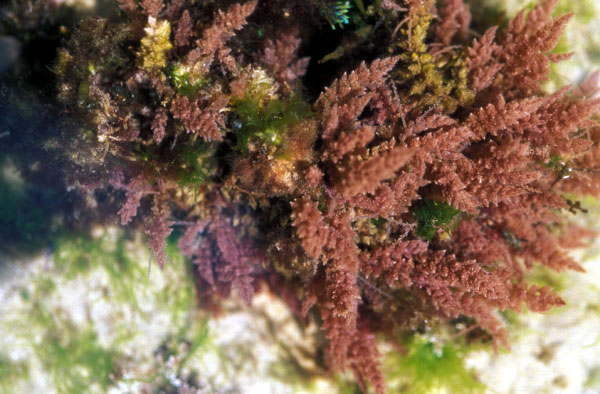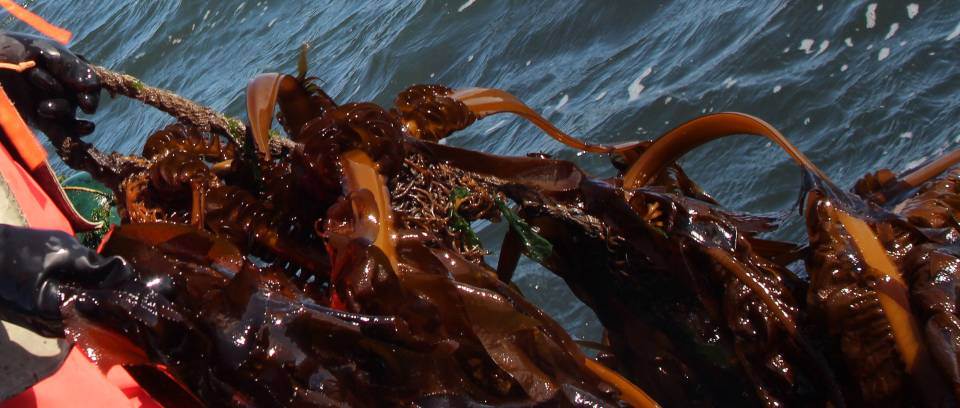The tetrasporophyte of Asparagopsis armata has been previously established as a novel seaweed biofilter for integrated land-based mariculture. The species growth and biofiltration rates were much higher than the values described in the literature for Ulva spp., the most common seaweed biofilter. However, a validation of the advantage of one species over the other requires a study of the performances of these two species in the same system at the same time. In this work, we compared the biofiltration performance and biomass yield of A. armata and Ulva rigida cultivated in the effluents of a fish farm in southern Portugal. Comparisons were performed at different water renewal rates and in two seasons of the year. The maximum total ammonia nitrogen (TAN) removal rates were similar for both species in December (2.7 and 2.8 g TAN m–2 day–1 for U. rigida and A. armata, respectively) and higher for A. armata (6.5 g TAN m–2 day–1 ) than for U. rigida (5.1 g TAN m–2 day–1 ) in May. Higher differences were observed when estimating the nitrogen biofiltration through the organic nitrogen yield (N yield) of the biomass produced, particularly in May. This estimate is directly related with the biomass yield and the N content in the tissue which were always higher for A. armata than for U. rigida. In December, the maximum biomass yields were 71 g dry weight (DW) m–2 day–1 for A. armata and 44 g DW m–2 day–1 for U. rigida, while in May, the yield of A. armata was 125 g DW m–2 day–1 and of U. rigida was 73 g DW m–2 day–1 . This study confirmed that A. armata is indeed a more efficient biofilter than U. rigida. To the best of our knowledge, the production rates reported here are the highest ever reported for macroalgae cultivated in tanks.
Digital library
-
-
Mesocosm experiments conducted for ecological purposes have become increasingly popular because they can provide a holistic understanding of the biological complexities associated with natural systems. This paper describes a new outdoor mesocosm designed for CO2 perturbation experiments of benthos. Manipulated the carbonate chemistry in a continuous flow-through system can be parallelized with diurnal changes, while irradiance, temperature, and nutrients can vary according to the local environment. A target hydrogen ion activity (pH) of seawater was sufficiently stabilized and maintained within 4 h after dilution, which was initiated by the ratio of CO2-saturated seawater to ambient seawater. Specifically, pH and CO2 partial pressure (pCO2) levels gradually varied from 8.05–7.28 and 375–2,691 μatm, respectively, over a range of dilution ratios. This mesocosm can successfully manipulate the pH and pCO2 of seawater, and it demonstrates suitability for ocean acidification experiments on benthic communities.
-
Between the late 1960s and the early 1980s, several generations of phycologists in Hawaii and the Philippines, associated with M. S. Doty, contributed to developing a new approach, and to advance concepts in marine agronomy. This study reviews the approach and the main concepts contributed. Integrating these contributions with others, a basic conceptual framework for marine agronomy is presented.
-
Algae are one of the most viable feedstock options that can be converted into different bioenergies viz., bioethanol, biobutanol, biodiesel, biomethane, biohydrogen, etc. owing to their renewable, sustainable and economic credibility features. Algal biomass to fuel biorefining process is generally classified into three categories as chemical, biochemical and thermochemical methods. The present article aims to provide a state-of-the-art review on the factors affecting the thermochemical conversion process of algal biomass to bioenergy. Further, reaction conditions of each techniques (torrefaction, pyrolysis, gasification and hydrothermal process) influence biochar, bio-oil and syngas yield were discussed. Reaction parameters or factors such as reactor temperature, residence time, pressure, biomass load/feedstock composition, catalyst addition and carrier gas flow affecting process efficiency in terms of product yield and quality were spotlighted and extensively discussed with copious literature. It also presents the novel insights on production of solid (char), liquid (bio-oil) and gaseous (syngas) biofuel through torrefaction, pyrolysis and gasification, respectively. It is found that the energy intensive drying was more efficient mode involved in thermochemical process for wet algal biomass. However other modes of thermochemical process were having unique feature on improving the product yield and quality. Among the various factors, reaction temperature and residence time were relatively more important factors which affected the process efficiency. The other factors signposted in this review will lay a roadmap to researchers to choose an optimal thermochemical conditions for high quality end product. Lastly, the perspectives and challenges in thermochemical conversion algae biomass to biofuels were also discussed.
-
In order to test the suitability of a site for the rearing of Macrocystis integrifolia. ten sporophytes were transplanted from a wild patch at Whiting Harbor. Sitka. Alaska. to a site located behind the Sheldon Jackson College salmon hatchery in Sitka. Growth and survival were compared at the locations from April 4 to May 28. 1987. Growth at Whiting Harbor was significantly greater than growth at Sheldon Jackson College (SJC). A freshwater lens at the SJC site is thought to have impaired growth of the upper blades on the plants. For this reason the SJC site is not suitable for M. integrifolia.
Attempts were made to artificially culture M. integrifolia at the SJC facility. Culturing from spore release through gametophyte stages to maturation and zygote fertilization was successful. However. culturing of the new sporophytes was not successful.
-
A Bayesian inference method was employed to quantify uncertainty in an Integrated Multi-Trophic Aquaculture (IMTA) model. A deterministic model was reformulated as a Bayesian Hierarchical Model (BHM) with uncertainty in the parameters accounted for using “prior” distributions and unresolved time varying processes modelled using auto-regressive processes. Observations of kelp grown in 3 seeding densities around salmon pens were assimilated using a Sequential Monte Carlo method implemented within the LibBi package. This resulted in a considerable reduction in the variability in model output for both the observed and unobserved state variables. A reduction in variance between the prior and posterior was observed for a subset of model parameters which varied with seeding density. Kullback–Liebler (KL) divergence method showed the reduction in variability of the state and parameters was approximately 90%. A low to medium seeding density results in the most efficient removal of excess nutrients in this simple system.
-
The sustainability of aquaculture has been debated intensely since 2000, when a review on the net contribution of aquaculture to world fsh supplies was published in Nature. This paper reviews the developments in global aquaculture from 1997 to 2017, incorporating all industry sub-sectors and highlighting the integration of aquaculture in the global food system. Inland aquaculture—especially in Asia—has contributed the most to global production volumes and food security. Major gains have also occurred in aquaculture feed efciency and fsh nutrition, lowering the fsh-in–fsh-out ratio for all fed species, although the dependence on marine ingredients persists and reliance on terrestrial ingredients has increased. The culture of both molluscs and seaweed is increasingly recognized for its ecosystem services; however, the quantifcation, valuation, and market development of these services remain rare. The potential for molluscs and seaweed to support global nutritional security is underexploited. Management of pathogens, parasites, and pests remains a sustainability challenge industry-wide, and the efects of climate change on aquaculture remain uncertain and difcult to validate. Pressure on the aquaculture industry to embrace comprehensive sustainability measures during this 20-year period have improved the governance, technology, siting, and management in many cases.
-
Modern methods of macroalgal cultivation of the large brown seaweeds commonly and collectively referred to as ‘kelp’ began in the early 1950’s in China, with research spearheaded by ‘the father of mariculture’, Prof. CK Tseng and his team. Since this time, kelp aquaculture has steadily grown in China and other Asian countries such as Japan, and the Republic of Korea. Now, almost all of the seaweed produced for human consumption, alginates and other purposes comes from aquaculture, with the extent of cultivation clearly visible on satellite images in some regions. Research in these countries has focused on brown algal species including Saccharina japonica and Undaria pinnatifida, concentrating primarily on developing a number of commercial strains that demonstrate temperature-tolerance of warmer seawater, and latterly, on improved productivity. In China, it is common practice to have centralised seaweed hatchery facilities that produce plantlets for further on-growing at a number of local sea sites.The development of centralised facilities using controlled seaweed strains most likely lends itself to a higher degree of standardised operations during the production cycle.
In direct contrast to the mass culture of seaweed in China and other Asian countries, commercial cultivation production in Europe remains on a small scale. While European research on kelp has existed at least as long as for that conducted in China, seaweed cultivation techniques have been known (generally only within research facilities) for approximately thirty years. For most of this time, cultivation has existed at a demonstration/pilot-scale only, although this is now changing in a number of countries, primarily across NW Europe. It was recognised early on that the Chinese method of growing seaweed by inserting small plantlets into ropes for on-growing at sea would not be economically efficient in Europe, given the cost of labour. Alternative cheaper seeding techniques, as described in this document, have been developed instead. Longline design is also different in Europe, where sea conditions are generally more challenging than the more sheltered areas that typically support Chinese aquaculture. This influences design and of course the cost of equipment that is used. The concurrent European research on wild strains of kelp species, partnered with a strong requirement for developing site specific cultivation systems has naturally led to some variance in production protocols and systems.
The EnAlgae project has allowed its research partners in NW Europe the opportunity to use hindsight of the expansion of global seaweed cultivation to full advantage. A theme of the project(WP1, Action 5) has been ‘the development and exchange of best practice for mass production of macroalgae’. For this action to be completed satisfactorily, demonstration/pilot sites (WP1, Action 2)were constructed at the macroalgal partner facilities. The subsequent development of a close working relationship enabled production of comparable data for identified species (Saccharina latissima and Alaria esculenta) on cultivation methodology, data collection (WP1, Action 3) and macroalgal growth results. The standardisation of all of these elements was designed to produce reliable data and share common experiences between macroalgal cultivation stakeholders in NW Europe, culminating in the production of this manual, and the accompanying Macroalgal Best Practice document.
This document is a manual of collated Standard Operating Protocols (SOPs) that were developed in the three EnAlgae macroalgal hatcheries in the National University of Ireland, Galway(NUIG), Queen’s University, Belfast (QUB) and the Centre d’Etude et de Valorisation des Algues (CEVA). It describes the set-up/requirements of each seaweed hatchery, the hatchery cultivation process, thesea on-growing process, as well as biomass and environmental parameter measurements and sampling. While some SOPs were subject to some inherent differences within each hatchery (e.g. pre-existing seawater pumping and distribution systems), an effort was made to ensure that as many elements of the SOPs were standardised across the partners. For example, the biomass sampling SOP was particularly important to enable the collection of comparable data in Ireland, Northern Ireland and France.
The SOP manual has been designed for reading with the EnAlgae Macroalgal Best Practice document. This sister document offers further advice and observations of the methods used, including elements of the processes that worked, and equally importantly, where system failures occurred, and revisions were made. It is hoped that both documents will become a valuable resource for those interested in developing European kelp cultivation in NW Europe and beyond, providing information on techniques that can further refined, leading to ever-increasingly efficient seaweed production at sea.
-
From February 9 to 12, 2020, we organized a special session at the Aquaculture of America meetings held at the Hawai'i Convention Center in Honolulu on the island of Oahu. The session, entitled “Seaweed aquaculture – from historic trends to current innovation” included over 20 presenters. The session encompassed the breadth of seaweed research that has arisen in the last decade and beyond. It spanned topics from seaweed tank and pond cultivation, off-shore design and deployment, genetics and strain selection, algae education, uses and processing of algae for food, feed and biofuel, and the compounding challenges facing this developing industry. Currently, the global seaweed industry is valued at more than US $11 billion, and is dominated by production in Asian countries including China, Indonesia, Korea, and Japan (FAO, 2020). Almost 97% of this global supply is aquaculture-sourced seaweeds (Costa-Pierce, 2021; Costa-Pierce & Chopin, 2021; Piconi, Veidenheimer, & Bob, 2020).
-
Best management practices (BMPs) were developed for management of bottom soil in freshwater aquaculture ponds in Thai- land. These practices were based on a survey of production practices in tilapia, catfish, carp, and freshwater prawn culture and upon findings of studies of physical and chemical characteristics of bottom soil from ponds of different ages. Fifteen BMPs were designed to encourage the following: pond dry-out between crops; aeration of bottoms by tillage; liming of acidic bottoms; use of sedimentation basins; responsible disposal of sediment; erosion control; application of proper construction techniques; reduction in suspended solids in effluents. The BMPs have been translated into Thai for distribution to farmers, and several of the BMPs have a high rate of adoption by Thai farmers.





